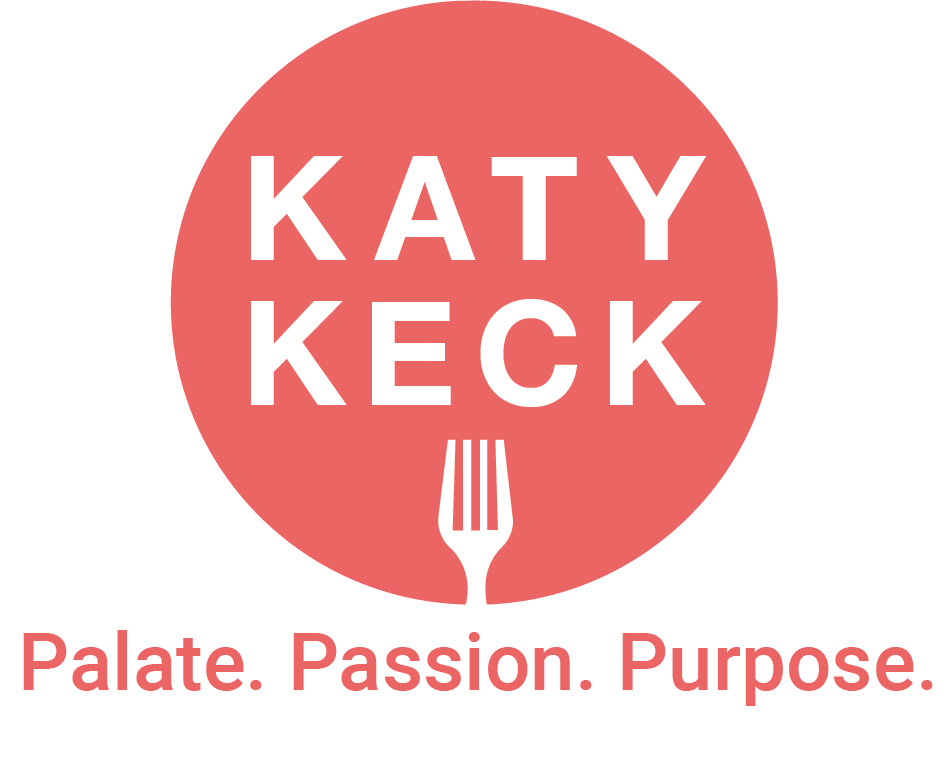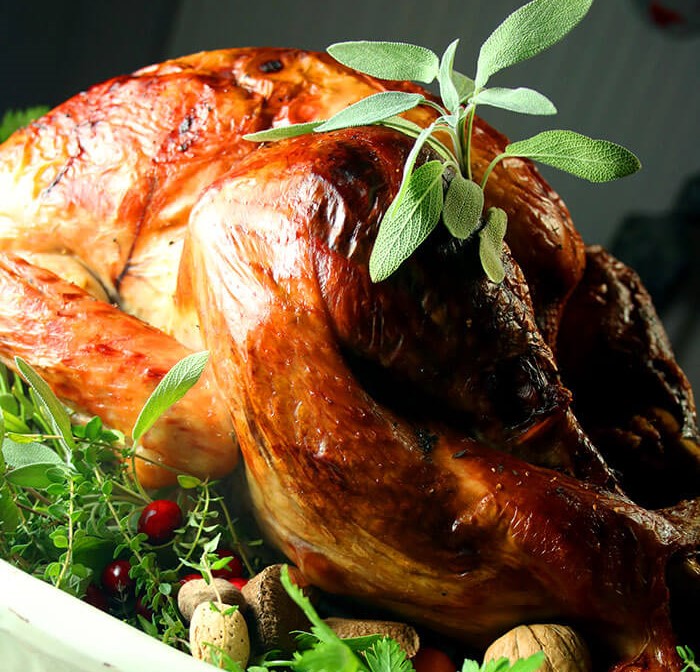
Nov 20, 2016 | Dinners & Mains, Dressings & Sauces, Holidays, Passionate Producers, Pot Lucky, Recipes, Savvy Kitchen Tips
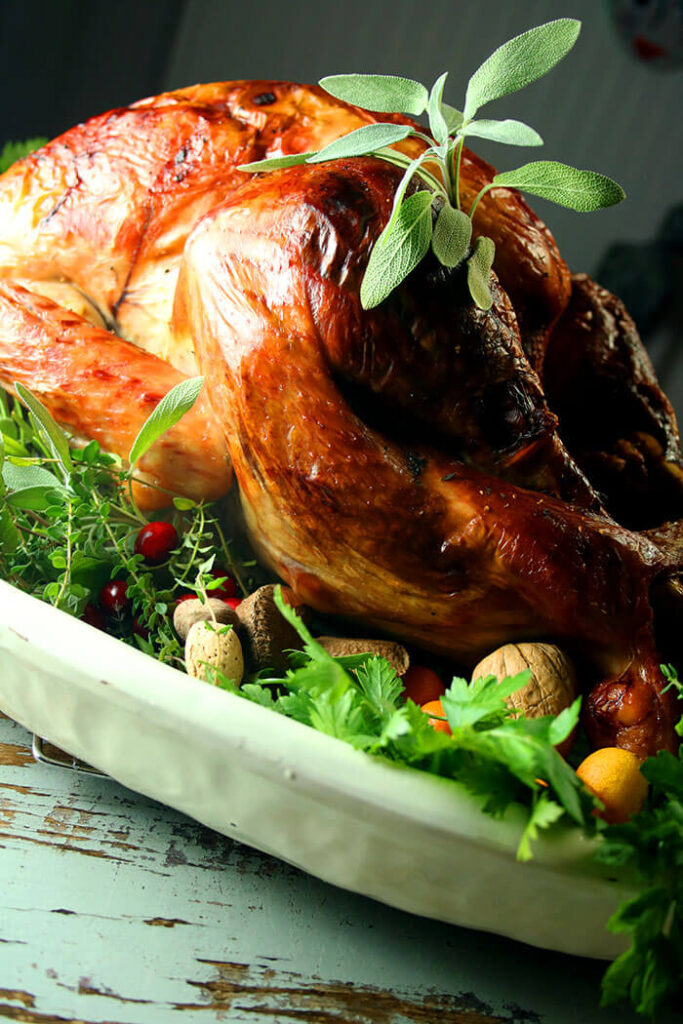
Nary has a Thanksgiving rolled by that I am not peppered with queries from dawn to dusk. I heed the call, alternating with “Gobble Gobble” and “Butterball Hotline.” This year, I say bring it on. I’ve got nothing but time. Yup! I have already cooked my Thanksgiving feast – the roast turkey and the gravy – and served it up with a “Family Favorites Pot-lucky.” Food served. Wine drunk. Dishes done. Trash at the curb. Sorry. Not sorry.

We gathered earlier this month and the pot-lucky theme was Family Treasures – the iconic culinary treats that are essential for fall family feasts. I brought Gaga’s Delmonico apples and a cranberry kumquat chutney, that’s a newer tradition. One couple brought a wonderful red and yellow beet with nutty goat cheese appetizer. The other dishes were both familiar and uniquely twisted – a modern green bean casserole & sweet potatoes with pecans, scalloped corn & sprouts with bacon, and mash taters & an amazing sausage stuffing. It was a tasty trip seeing how others celebrate the season.

And because it has been so warm, I was able to get most of the décor from the herb bed, grasses and colorful leaves. After one too many table settings that hogged the site line and got moved off the table about 5 minutes after we were seated, I decided to keep it low and used a collection of mismatched short silver cups, more commonly used at Derby time – julep cups! That plus a few candles and some nuts and gourds was all I needed.
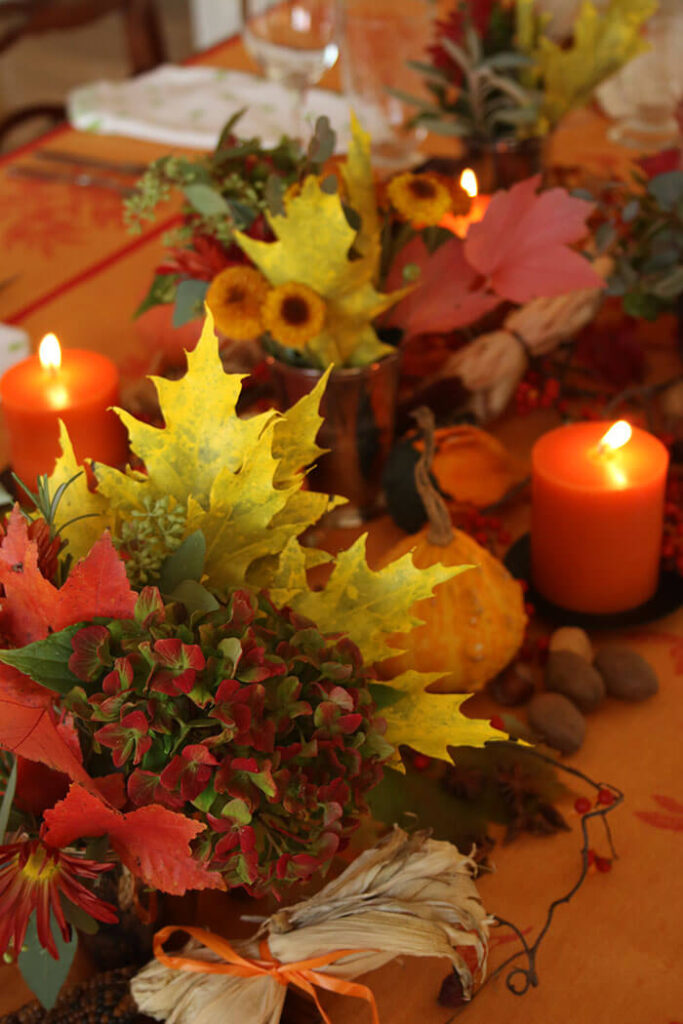
I was also in charge of the turkey and over the years I’ve had my share of turkey prep. Some years I have gone from perfect turkey on the Today Show Thursday to turkey leftovers on Good Morning America Friday. By noon on Thursday when others were thinking about the big dance, I had moved on to leftovers prep. One year my balcony was lined by so many wall to wall coolers filled with turkey parts that you’d have thought I was running a soup kitchen. Suffice it to say I have done every show with every possible technique and turkey part. Whole turkeys, turduckens, spatchcocked and deconstructed. Done. It. All.
The real secret to Turkey Perfection comes from good preparation, organization, great ingredients and having the right equipment. My turkey this year came from Wise Family Farm and was about 16 pounds. I hope you are so lucky as to have a fresh, locally pastured bird, but if you are only able to source a frozen turkey, you need to get busy now. The safest way to thaw a frozen turkey is in the refrigerator over several days. And don’t forget that it takes 24 hours to thaw every 4 pounds of frozen bird.
If you head to my shop, you will find the tools I find most invaluable – a good Roasting Pan , about 2-3” deep (I prefer “stick” over non-stick – that results in a nice dark brown gravy), a Roasting Rack
, about 2-3” deep (I prefer “stick” over non-stick – that results in a nice dark brown gravy), a Roasting Rack that raises the turkey for essential airflow, an Instant Read Thermometer
that raises the turkey for essential airflow, an Instant Read Thermometer to validate estimated cooking time, a Fat Separator
to validate estimated cooking time, a Fat Separator to skim off fat and pour the rich stock from the bottom of the vessel, and anything written by Rick Rodgers, including The Turkey Cookbook
to skim off fat and pour the rich stock from the bottom of the vessel, and anything written by Rick Rodgers, including The Turkey Cookbook , Thanksgiving 101
, Thanksgiving 101 , and The Big Book of Sides
, and The Big Book of Sides . I can safely say everything I know about turkey and gravy I learned from Rick. He IS Mr. Turkey.
. I can safely say everything I know about turkey and gravy I learned from Rick. He IS Mr. Turkey.
I find the recipe below to be quite foolproof. It is a classic technique for an average-sized 18-pound turkey, but the instructions can be adjusted depending on the size of your bird. There are many tweaks and twists that can bedazzle the bird, but it always helps to know the basics before you start embellishing. Learned that one from Julia herself! And one of the things I learned from Rick is to have a stock pot going all day so that you can baste before your bird gets juicy and you have everything needed to make gravy, regardless of the amount of juices your bird yields. I have included details on how to do that so you can relax and know you will be gravy-prepared.
Roast Turkey Perfection with Gimme-More Gravy
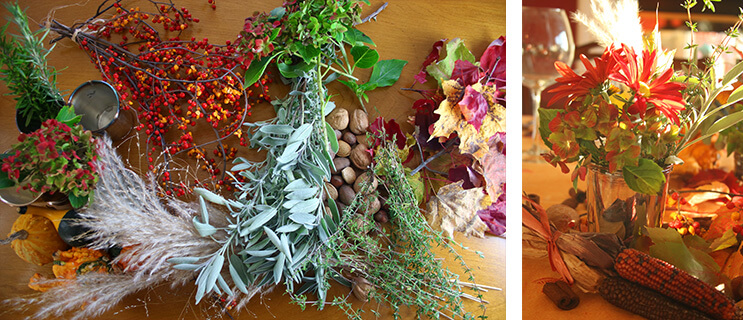
Turkey Perfection
- One (18-pound) fresh turkey
- Freshly ground black pepper
- Kosher salt
- 2 carrots, coarsely chopped
- 2 stalks celery, coarsely chopped
- 1 small onion, coarsely chopped
- 3 quarts turkey or chicken stock (I prefer low sodium since this will reduce for hours – you can always add seasoning later)
- 1 Tablespoon olive oil
- 4 sprigs Italian parsley
- 2 sprigs fresh thyme
- 6 peppercorns
- 1 bay leaf
- 1/2 cup* plus 2 Tablespoons unsalted butter, at room temperature
- 1/2 cup all-purpose flour
*You may not need this if the turkey releases enough fat to yield a half-cup. Commercially produced birds tend to be fattier, but the pasture-raised bird I cooked was very lean and I needed to supplement with the butter when making the roux for the gravy.
Position oven rack in the lower part of oven and preheat to 325° F.
Remove any pieces/parts inside the turkey – the neck and giblets (which includes the gizzard, heart, and liver) – and set aside.
Rinse the turkey inside and out with cold water. Pat dry with paper towels and wipe out the cavity. Rub cavity with salt and pepper and stuff loosely with 1/3 of the carrots, celery, and onions.
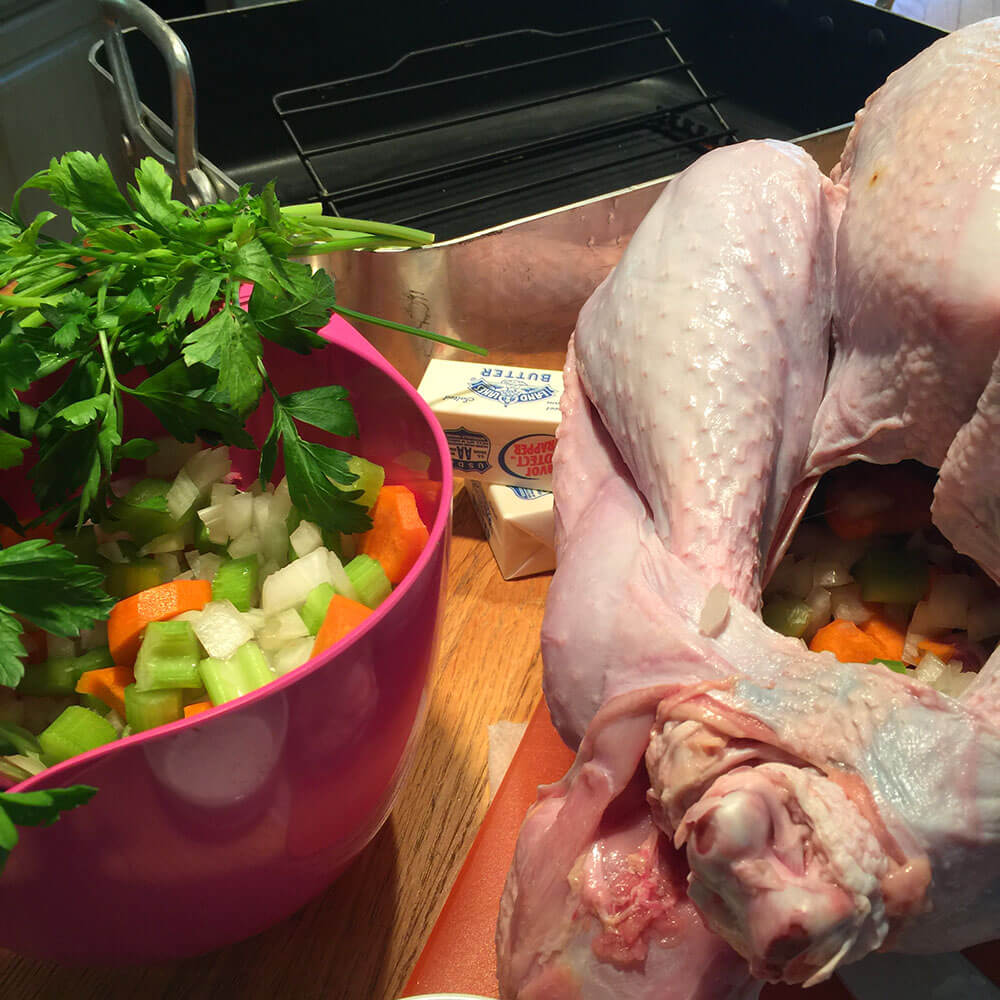
Pin the turkey’s neck skin to the back with a bamboo skewer or trussing pin. Tuck the wings akimbo (“hands” behind the back, elbows turned outward) to keep the tips from burning.
Place the drumsticks in the hock lock. Some birds will be butchered with a skin flap as shown above. Others may have a plastic loop to lock the legs. If all else fails, tie them together with kitchen string.
Place the turkey, breast side up, on a rack in a roasting pan. Rub all over with 2 Tablespoons softened butter. Season with salt and pepper.
Tightly cover the breast area with aluminum foil. (Not tented, just pressed tightly onto the breast. You will remove this during the last hour of roasting).
Pour 2 cups of turkey or chicken stock into the bottom of the pan and place in the pre-heated oven.
Stock Pot
As soon as the bird is in the oven, start the stock pot. This will give you juices for basting during the early hours when the bird hasn’t given off much liquid. It will also provide backup turkey stock for a bird that is a low juice producer.
Hack the turkey neck into 4 or 5 pieces. Trim away the gizzard’s silver skin and membrane and coarsely chop. Some like to also chop up the liver and heart and add it here, but I think they are a bit bitter when boiled. I’m more likely to save them and sauté later with onions and then add them to stews, fried rice, or place atop avo toast.
In a large stock pot, heat the olive oil, add the turkey neck, any giblets, and sauté until brown, about 5-7 minutes. Add the remaining carrots, celery, and onions and sauté for 5 minutes. Add 1 quart of turkey stock, along with the parsley, thyme, peppercorns and bay leaf. Bring to a boil and reduce to a simmer. Continue to simmer, using this to baste the turkey as needed. Periodically skim any floaters. (I’m trying really hard not to say scum, but you know what I’m talking about.) Add additional turkey stock to the pot to maintain a 1-1 ½ quart level.
Basting
Roast the turkey, basting all over every hour with the juices in the bottom of the pan or from the stock pot. Lift up the foil to baste the breast area. I usually rotate the pan periodically to make sure there are no oven hot spots and the bird roasts evenly. Roast until an Instant Read Thermometer inserted in the meaty part of the thigh (but not touching the bone) reads 180° F and the breast is 165° F, about 4 hours. Whenever the drippings evaporate, baste from the stock pot and add a bit more stock to the roasting pan. Remove the foil from the breast during the last hour to let the skin brown.
inserted in the meaty part of the thigh (but not touching the bone) reads 180° F and the breast is 165° F, about 4 hours. Whenever the drippings evaporate, baste from the stock pot and add a bit more stock to the roasting pan. Remove the foil from the breast during the last hour to let the skin brown.
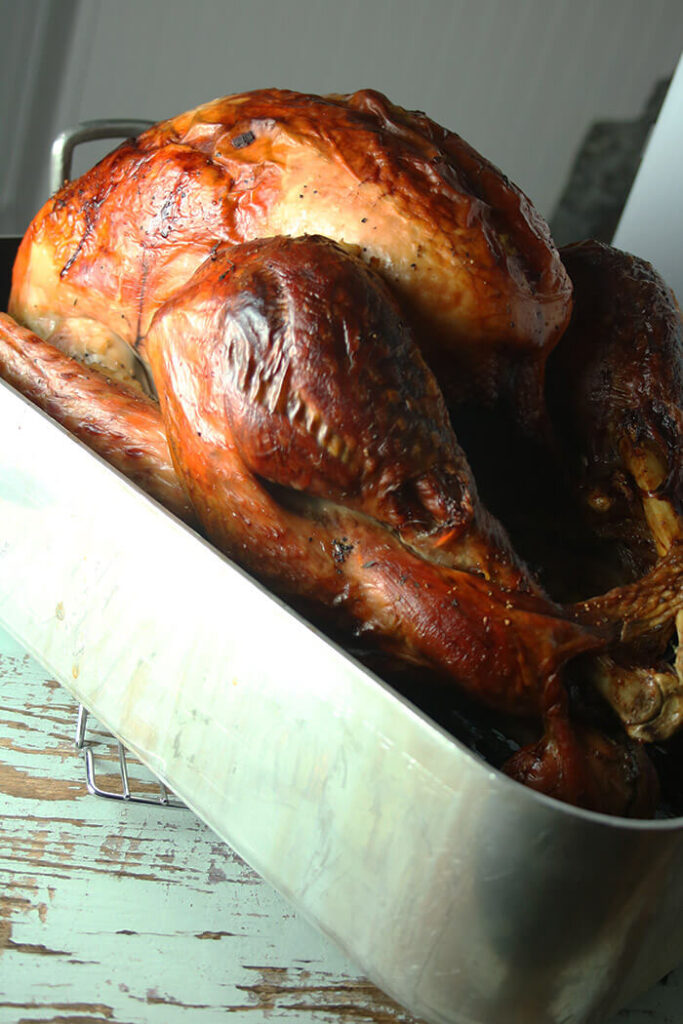
It’s better to pad your estimated cooking time by 30 minutes, so nobody is standing around drinking too much while waiting for the bird. I say that like it’s a bad thing. I always defer to the thermometer, but use the times below as a guideline. Stuffing your turkey will add about 5 minutes per pound, so I cook the stuffing on the side (doesn’t that make it dressing??). Since you need to let the bird rest 30 minutes and carving takes time, you have most of an hour to finish or warm the rest of the sides when the oven is no longer needed for the turkey.
Estimated Roasting Times – Unstuffed Turkey – about 15 – 20 min a pound
(Oven Temperature 325° F)
12 to 14 pounds 3 to 3 3/4 hours
14 to 18 pounds 3 3/4 to 4 1/4 hours
18 to 20 pounds 4 1/4 to 4 1/2 hours
20 to 24 pounds 4 1/2 to 5 hours
Transfer the turkey to a large serving platter and let it stand for at least 30 minutes before carving. Pour any juices that have run off back into the roasting pan.
Gimme-More Gravy
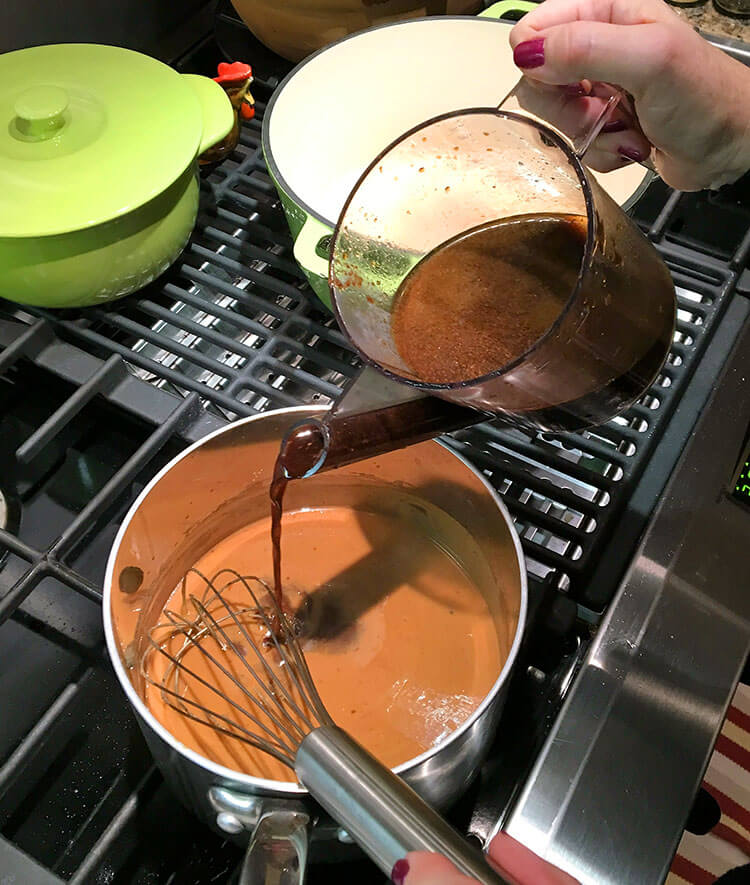
Once the turkey is out of the oven and resting, pour the drippings from the roasting pan into a Fat Separator or heatproof glass measuring cup. Let stand 5 minutes, then skim off and reserve the clear yellow fat that rises to the top. Measure 1/2 cup fat, adding butter, if needed, to make 1/2 cup.
or heatproof glass measuring cup. Let stand 5 minutes, then skim off and reserve the clear yellow fat that rises to the top. Measure 1/2 cup fat, adding butter, if needed, to make 1/2 cup.
Check the measurement on the broth remaining in the fat separator, once you have skimmed the fat. If you have less than one quart of liquid, add enough strained liquid from the stock pot to the skimmed drippings to make 4 cups.
Place the roasting pan on low across two stove burners (or scrape all the brown bits from the roasting pan into a saucepan) and add the turkey fat or fat/butter combo (1/2 cup total).
Whisk in the flour to make a roux, scraping up the browned bits on the bottom of the pan, and cook until the paste is lightly browned, about two minutes. Whisk in the turkey broth. Cook, whisking often, until the gravy has thickened and no trace of raw flour flavor remains, about ten minutes.
If desired, finely chop whatever giblets you have prepared and add to the gravy. Check the seasonings and add salt and pepper, as needed. Transfer the gravy to a warmed gravy boat.

Carving
Remove the wing and leg on one side and slice the breast, carving parallel to the center/breast bone. Repeat on the other side. It’s become very popular to remove the breast and slice cross-wise like a loaf of bread. It’s not the way I was trained. But my Dad’s process which took an hour to carve…one slice for the platter, one for the man with the knife….and never ended up with enough food on the platter (What? You want more than one paper-thin slice???) has left some family members in therapy. I can’t be sure but I think some people that I may or may not be related to shred their turkey by hand just to avoid any brush with our torturous past. You are on your own – #NoJudgment – but know that there are plenty of videos on carving techniques!
However you carve it, enjoy and be sure to smother with amazing gravy and serve with gratitude! And be sure to share your family favorite sides in the comments below.
Serves 18 with about 4 cups of gravy
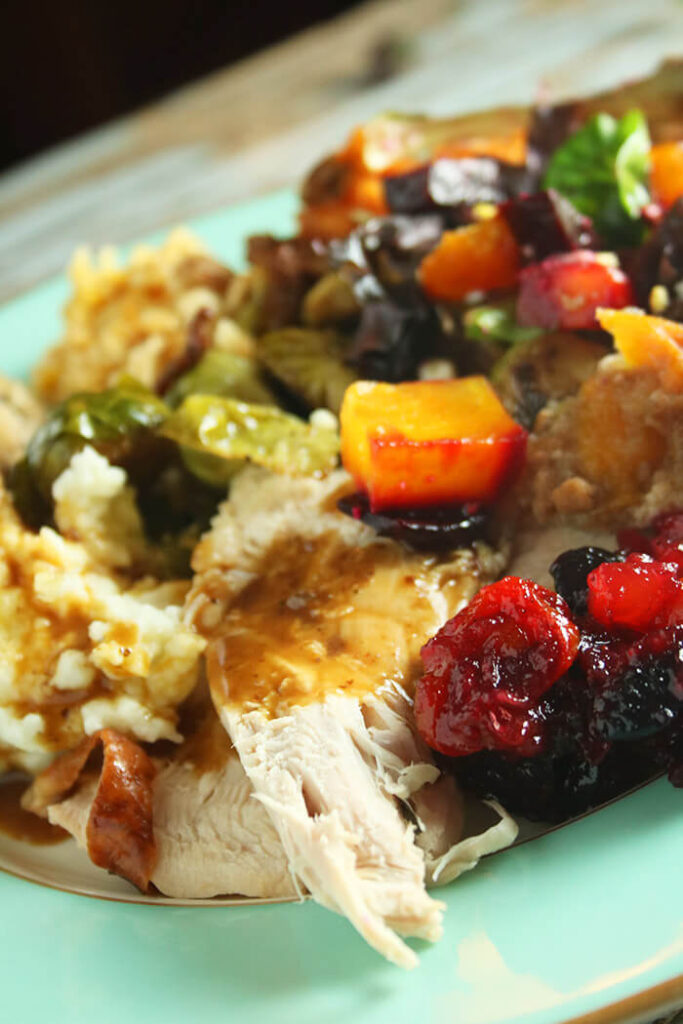
Take a page from this book and consider liquid dessert! Kind of a perfect way to end a meal – no further chewing needed.
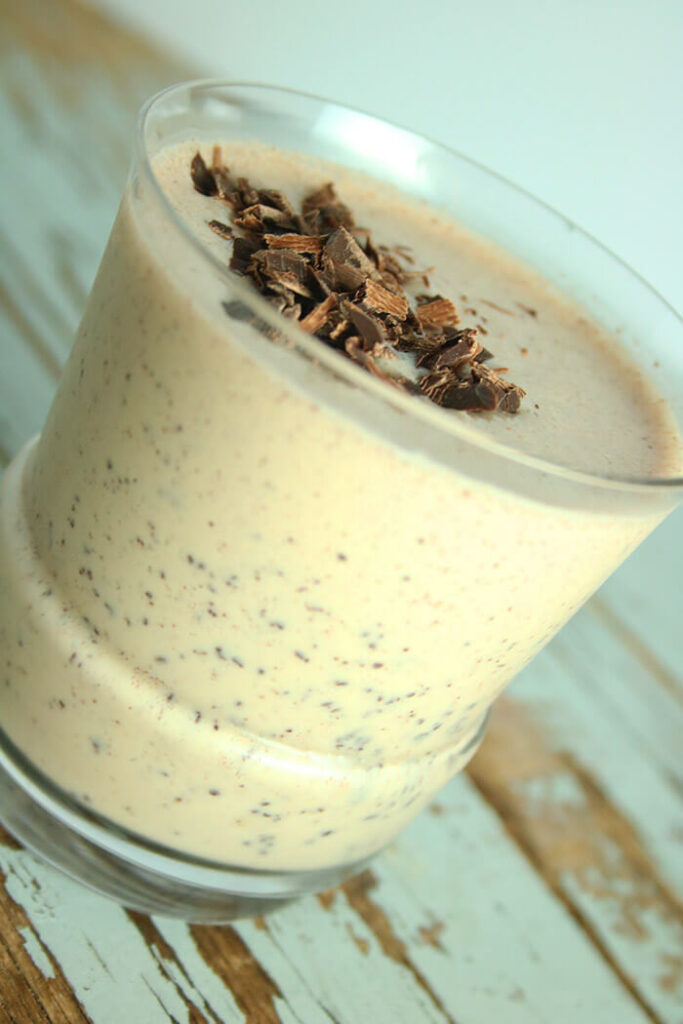
Gobble! Gobble!
This post contains affiliate links. For more of my must-have faves, check out my shop.
© Copyright: KatyKeck.com 2016. All rights reserved.
Hey, we want to hear from you!
Don’t forget to Comment, Share & Subscribe to our blog.
Save
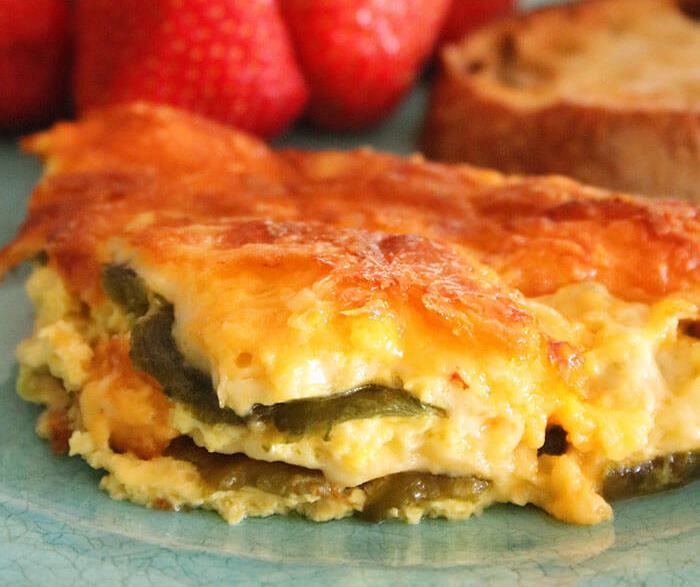
Sep 22, 2016 | Breakfast & Brunch, Passionate Producers, Recipes

Now that you have eggstracted all the info needed to pick the best possible, freshest, and ethically, pasture-farmed eggs for your roasted poblano strata, it’s time to get cooking. But what’s that you ask? What’s a strata?? Come on! You know what a strata is even if you don’t call it that. It’s a poor man’s soufflé, relying on bread instead of whipped egg whites. My mom was legend when it came to the classic one – an egg/milk mixture that she poured over chunks of bread and allowed to sit overnight in the fridge. The “chunkies” could be almost anything, but she (always a measurer) stuck to her recipe and used cubes of ham and cheddar. She called it a fondue, and while really more quiche-like (custard-based), it was probably closer to a fondue with all that melted cheese (yes, you CAN add too much cheese) than a strata which derives from the Latin word stratus, meaning layers. It was the ladies of the Silver Palate that popularized calling a layered brunch dish strata back in the 80s.
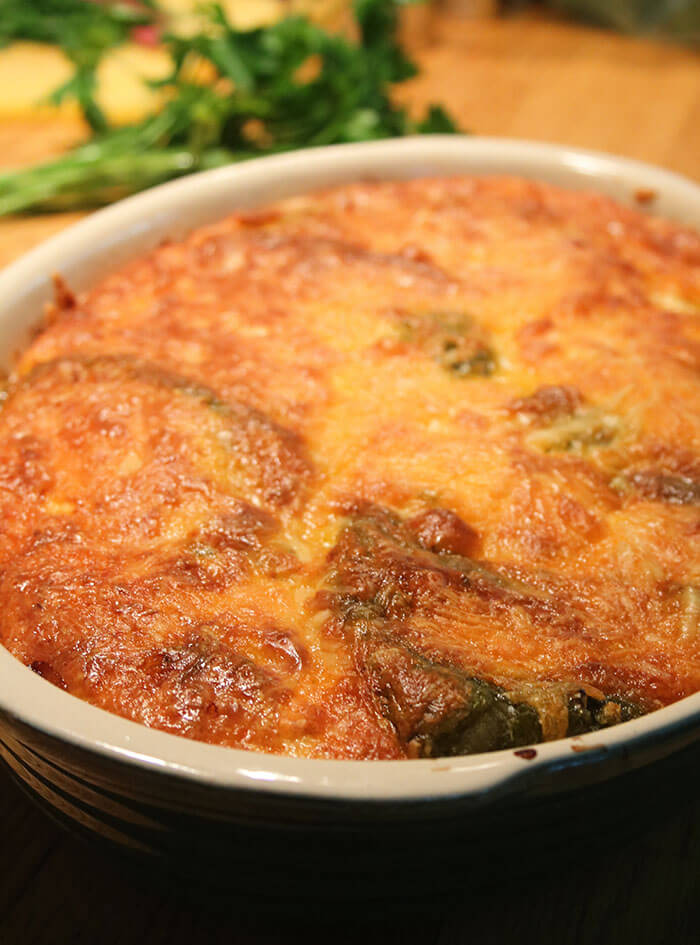
In this version, I am bringing layers back. This dish is assembled lasagna-style. And while I roast and peel the poblano peppers, if you are lucky enough to live in a place where you can get big cans of chilis, by all means, go for it. I first fell in love with my inspo on this dish at a cattle branding in Nebraska many many moons ago. It was featured in the Denver Junior League cookbook Colorado Cache and seemed almost soufflé like and probably hard to make, though I was told “doll, if it was that hard, we wouldn’t be making it.” There wasn’t a meal with less than 60 hungry ranch hands at the table. I brought the idea home, found no such canned chilis available, and created this brunch favorite.
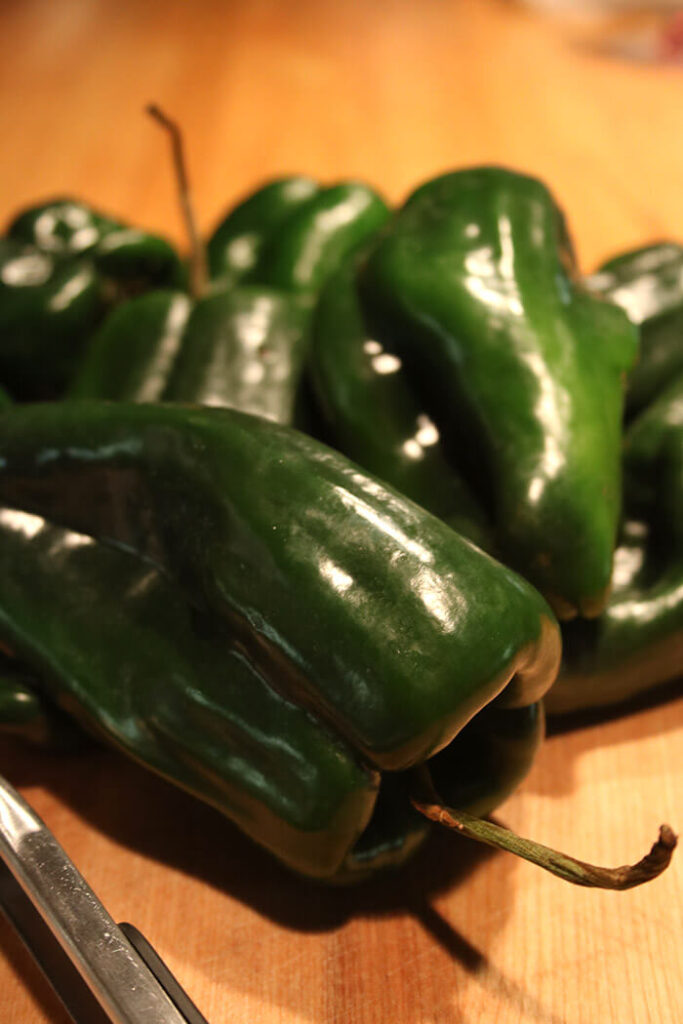
Roasted Poblano Strata
- 8 poblano peppers (or 32 ounces canned mild chilis, drained)
- 5 eggs
- 1 ¼ cups milk (plus 1/2 cup more if you are soaking the poblanos overnight – see below)
- 3 Tablespoons flour
- ½ t salt
- 8 ounces habanero or pepper jack cheese slices
- 3 cups shredded cheddar
Prep the poblanos: Grill (or char over a gas burner) the poblanos until blackened. Place in a plastic bag and close to sweat. Once cool enough to handle, run under cold water and peel off the charred skin. Trim off stems and discard seeds and ribs. You should be able to get two or three “filets” from each poblano. If you are prepping your peppers a night ahead (recommended), cover with about 1/2 cup of milk and store in the refrigerator, covered. This will turn down the heat to a reasonable breakfast temp.
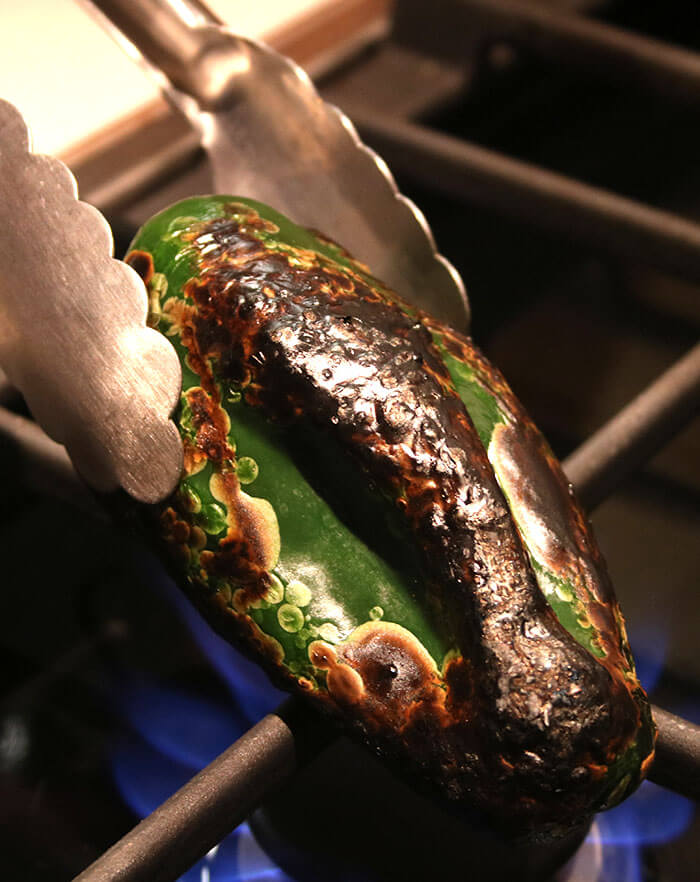
Prep the strata: Preheat the oven to 325oF degrees.
Butter a 2 or 3 quart baking dish.
Whisk together the eggs, milk, flour and salt.
Place a layer of poblanos in the baking dish and top with sliced cheese. Repeat, creating as many layers as needed to use all the poblanos and the cheese slices, at least two layers of each.
Pour the egg mixture over the poblanos. Sprinkle with shredded cheddar.
Bake at 325oF for 50 minutes until egg mixture is set and slightly puffed.
Allow to cool for about 10 minutes and serve warm!
Serves 8.
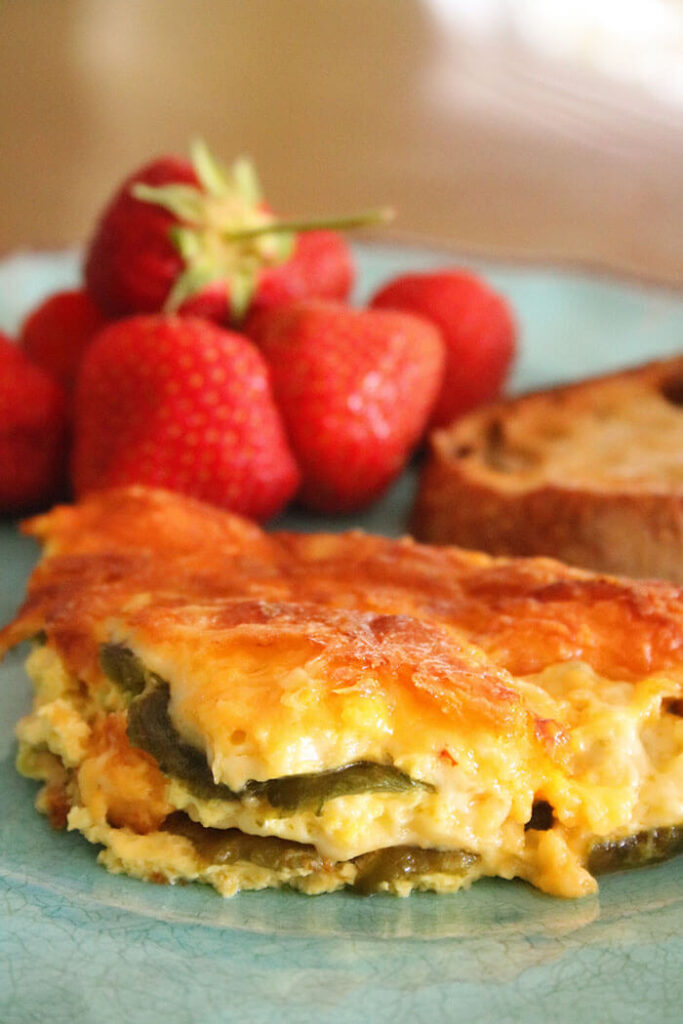
© Copyright: KatyKeck.com 2016. All rights reserved.
Hey, we want to hear from you!
Don’t forget to Comment, Share & Subscribe to our blog.

Sep 15, 2016 | Passionate Producers, Sustainability
 How many times have you reached for that egg caddy in the fridge and not thought a whip about where those eggs came from or how their mothers have been treated. I was making a roasted poblano strata (recipe in the next post) for some house guests one weekend and decided it was high time to take a deeper dive. An NPR interview with the very funny Mardi Jo Link discussing her book Bootstrapper: From Broke to Badass on a Northern Michigan Farm piqued my interest. And then I became friends with the chicken whisperer Tracy Wise, often seeing her three times a week at several local farmers’ markets. While I had already made the conscious decision to exclusively buy her eggs and chickens, I knew very little about what set them apart or why ethical farming mattered.
How many times have you reached for that egg caddy in the fridge and not thought a whip about where those eggs came from or how their mothers have been treated. I was making a roasted poblano strata (recipe in the next post) for some house guests one weekend and decided it was high time to take a deeper dive. An NPR interview with the very funny Mardi Jo Link discussing her book Bootstrapper: From Broke to Badass on a Northern Michigan Farm piqued my interest. And then I became friends with the chicken whisperer Tracy Wise, often seeing her three times a week at several local farmers’ markets. While I had already made the conscious decision to exclusively buy her eggs and chickens, I knew very little about what set them apart or why ethical farming mattered.
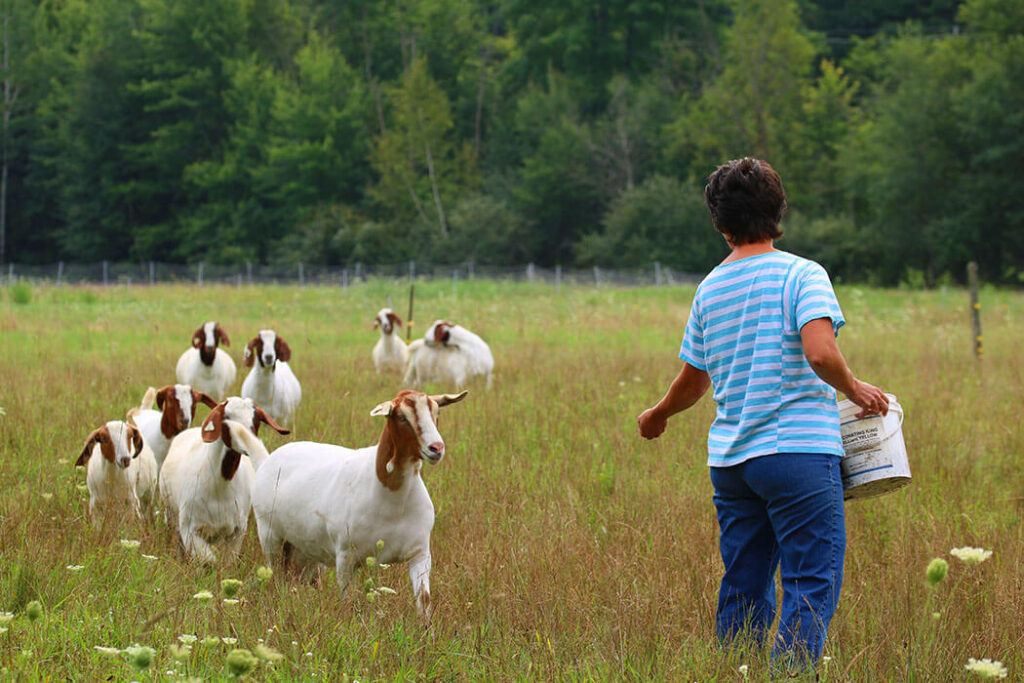 This summer I paid a visit to Wise Family Farm, the ten-acre plot owned by Tracy and Brad in Robinson Township (Michigan). Brad has spent nearly three decades with the US Coast Guard and they arrived with the family, including kids Jaycee, Garett and Annaliese, from Alaska only five years ago. Looking ahead to their next chapter, the family Wise opted to try their hand at farming. And a family affair it is. Not just adults, and not just eggs and chickens. As the photos proudly displayed at market show, all the kids are also involved – via 4H – and are responsible for calves, pigs, goats, and more. While chickens, eggs, and turkeys are the primary focus, the farm is home to many more. The cows, ranging from Jersey, to Holstein, to Maine-Anjou, are a real commitment to a traditional farming process that is increasingly harder to source. Because the Wises raise growth-hormone-free and non-GMO fed animals, they must source their calves at birth. They are quick to buy back the 4H winners because they are fully aware of the animal’s quality. More modern farming techniques may rely on growth hormone implants, but those committed to old-school techniques showcase both their labor of love and commitment to quality, a technique that is both time-consuming and expensive. When I asked Brad how they mastered this immense operation with no previous experience while he is holding down a full time job, he said “some trial, mostly error.” #Inspired!
This summer I paid a visit to Wise Family Farm, the ten-acre plot owned by Tracy and Brad in Robinson Township (Michigan). Brad has spent nearly three decades with the US Coast Guard and they arrived with the family, including kids Jaycee, Garett and Annaliese, from Alaska only five years ago. Looking ahead to their next chapter, the family Wise opted to try their hand at farming. And a family affair it is. Not just adults, and not just eggs and chickens. As the photos proudly displayed at market show, all the kids are also involved – via 4H – and are responsible for calves, pigs, goats, and more. While chickens, eggs, and turkeys are the primary focus, the farm is home to many more. The cows, ranging from Jersey, to Holstein, to Maine-Anjou, are a real commitment to a traditional farming process that is increasingly harder to source. Because the Wises raise growth-hormone-free and non-GMO fed animals, they must source their calves at birth. They are quick to buy back the 4H winners because they are fully aware of the animal’s quality. More modern farming techniques may rely on growth hormone implants, but those committed to old-school techniques showcase both their labor of love and commitment to quality, a technique that is both time-consuming and expensive. When I asked Brad how they mastered this immense operation with no previous experience while he is holding down a full time job, he said “some trial, mostly error.” #Inspired!
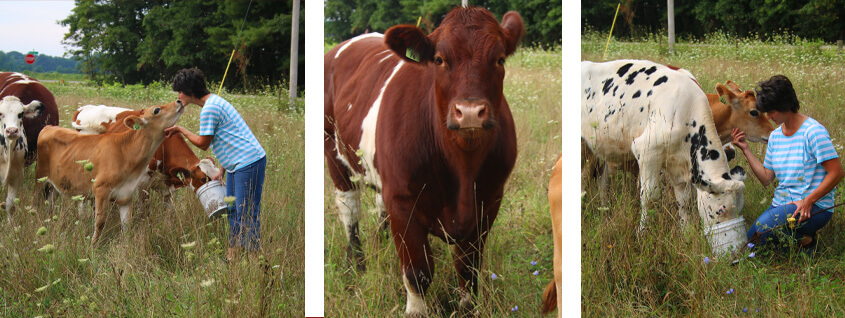 Their menagerie also includes pets, as well as friends and family of the animal variety. There’s a Welsh Harlequin duck by the name of Cheese & Quackers. A pig named Petunia. A small flock of guinea fowl, roaming off by themselves. A South-African breed of goats, name for the Afrikaans word Boer, meaning farmer. Some small mini lops rabbits (including one named Rose) and some very large Flemish Giants – which gave me a whole new perspective on where the term fluffy bunny slippers came from. They even have bees.
Their menagerie also includes pets, as well as friends and family of the animal variety. There’s a Welsh Harlequin duck by the name of Cheese & Quackers. A pig named Petunia. A small flock of guinea fowl, roaming off by themselves. A South-African breed of goats, name for the Afrikaans word Boer, meaning farmer. Some small mini lops rabbits (including one named Rose) and some very large Flemish Giants – which gave me a whole new perspective on where the term fluffy bunny slippers came from. They even have bees.
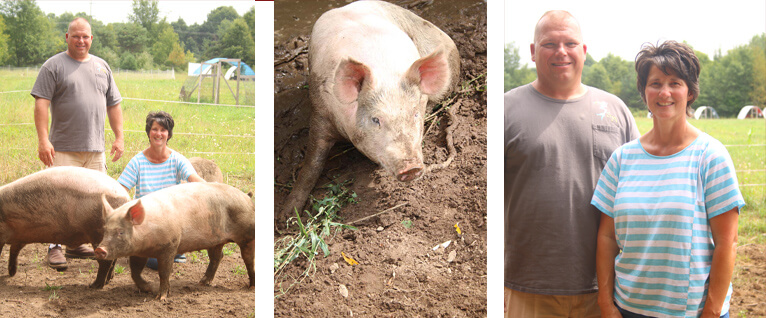

 But for me the main draw was the ladies, as Tracy calls them. I was intrigued by the fact that despite chicks and turkeys being hatched at a nearby farm, the hatch-lings are shipped day-old via the US Post office. This follows best practices targeted at preventing the spread of avian flu. There will be no cross-contamination by setting foot on another’s farm. Currently the Wises have some 65 turkeys – in preparation for this year’s Thanksgiving – and 700-800 laying Leghorn (I say, I say, boy – is that a chicken hawk?) hens. While all birds have access to the local non-gmo high quality feed provided, they love to roam and munch on fresh clover.
But for me the main draw was the ladies, as Tracy calls them. I was intrigued by the fact that despite chicks and turkeys being hatched at a nearby farm, the hatch-lings are shipped day-old via the US Post office. This follows best practices targeted at preventing the spread of avian flu. There will be no cross-contamination by setting foot on another’s farm. Currently the Wises have some 65 turkeys – in preparation for this year’s Thanksgiving – and 700-800 laying Leghorn (I say, I say, boy – is that a chicken hawk?) hens. While all birds have access to the local non-gmo high quality feed provided, they love to roam and munch on fresh clover.
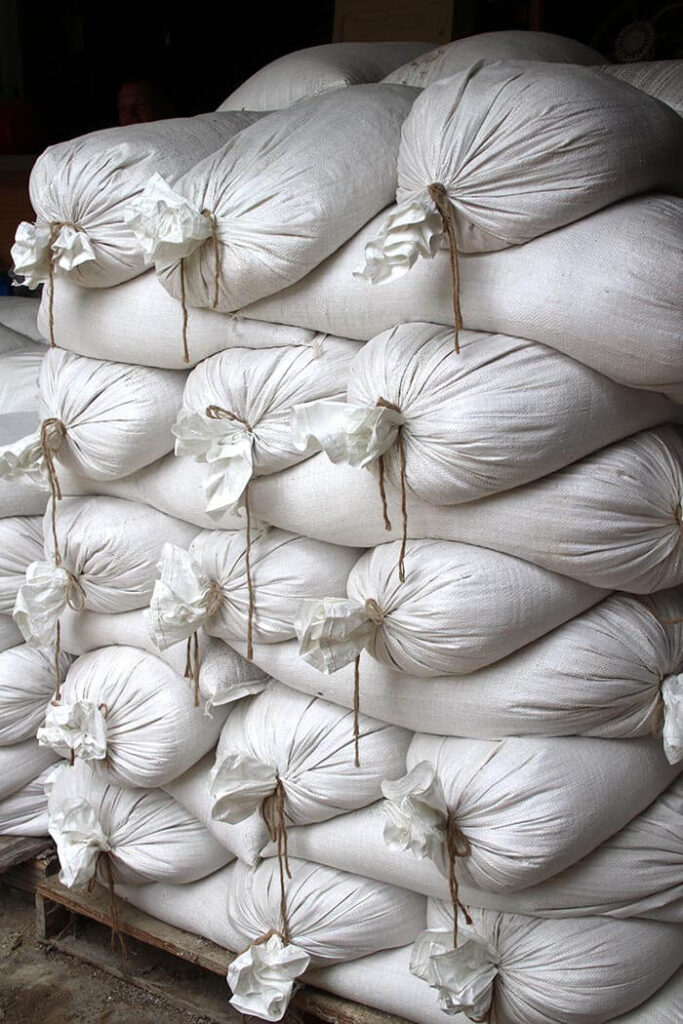 I visited the turkeys (still quite young) in a 10×10 foot partially covered pen. The chickens were in a large corral with a sort of covered wagon (the nesting box) within. Both are moved daily to a fresh patch with new grasses, clover, and grasshoppers. This has the added benefit of leaving behind yesterday’s droppings to fertilize the soil for future use. The nesting box or laying house is moved by tractor, but the smaller turkey pen is wheeled by hand to an adjacent patch daily. What alot of work.
I visited the turkeys (still quite young) in a 10×10 foot partially covered pen. The chickens were in a large corral with a sort of covered wagon (the nesting box) within. Both are moved daily to a fresh patch with new grasses, clover, and grasshoppers. This has the added benefit of leaving behind yesterday’s droppings to fertilize the soil for future use. The nesting box or laying house is moved by tractor, but the smaller turkey pen is wheeled by hand to an adjacent patch daily. What alot of work.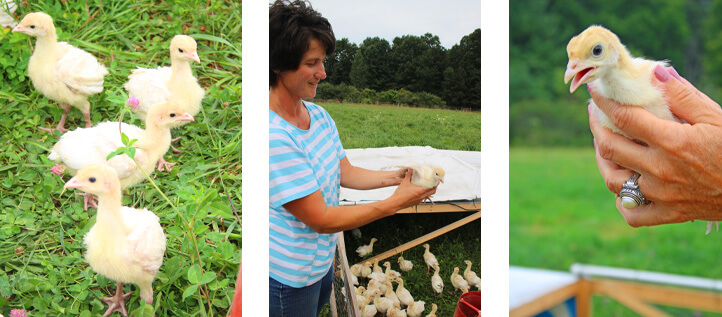
 The ladies get a lot of daily attention and are much more demanding than say a meat bird. In addition to providing food and water, the Wises must open the nesting box each morning, collected eggs twice daily, and finally close the box at night. Owls and hawks (yes, chicken hawks) are the biggest threat. And don’t forget the whole witness relocation program – hitching the tractor and pulling the nesting box over a few feet to its next resting spot.
The ladies get a lot of daily attention and are much more demanding than say a meat bird. In addition to providing food and water, the Wises must open the nesting box each morning, collected eggs twice daily, and finally close the box at night. Owls and hawks (yes, chicken hawks) are the biggest threat. And don’t forget the whole witness relocation program – hitching the tractor and pulling the nesting box over a few feet to its next resting spot.
 Once collected, eggs are run through an egg washing machine, as required by the State. Trust me I had more than a small “I Love Lucy” moment, but Tracy’s deft hand racked them and transferred as fast as they came through the washer. Then again the woman has practice – she washes from 100-200 DOZEN eggs each week.
Once collected, eggs are run through an egg washing machine, as required by the State. Trust me I had more than a small “I Love Lucy” moment, but Tracy’s deft hand racked them and transferred as fast as they came through the washer. Then again the woman has practice – she washes from 100-200 DOZEN eggs each week.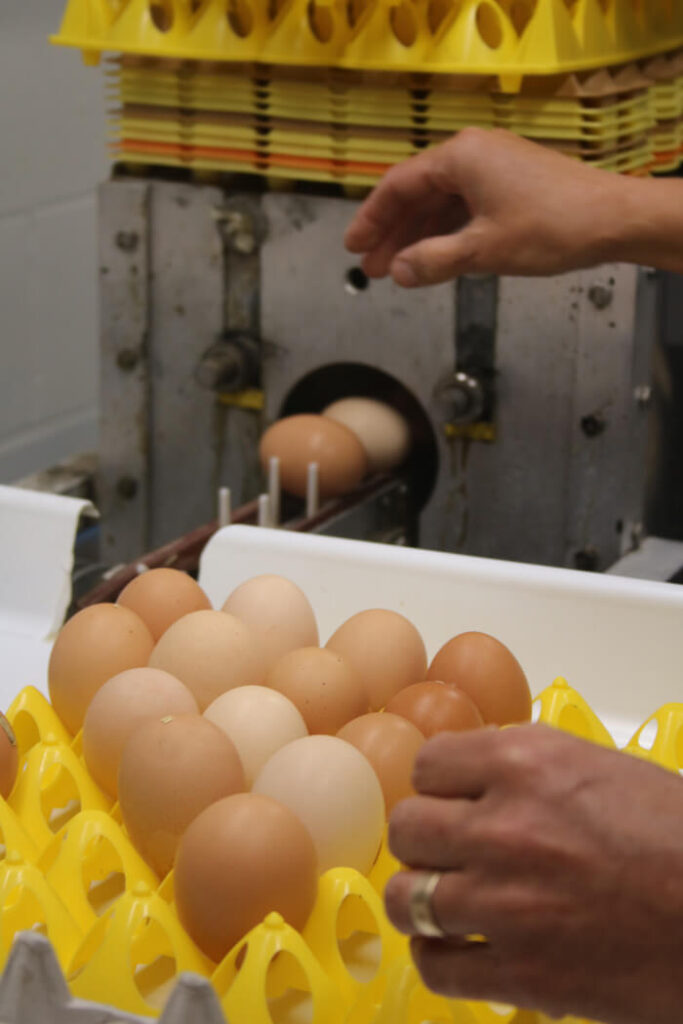 It’s not too late to order this year’s Thanksgiving turkey. By this time last year, it was. So I placed my 2016 turkey order in August of 2015. See below for details on placing your order.
It’s not too late to order this year’s Thanksgiving turkey. By this time last year, it was. So I placed my 2016 turkey order in August of 2015. See below for details on placing your order.
Not Eggsactly as Eggspected
– Or things you had no idea you needed to know about yard birds and ethical farming:
Did you know hens like to “go outside and play in the dirt til dinner” – just like we did. It’s called dirting or a dirt bath. Very cool, as in built in air-conditioner.

Did you know Tom turkeys strutting their stuff are called “Tomming Out”? When it’s time to be big man on campus, it turns out they can ruffle their own feathers.
Did you know an egg can be laid without a shell? Sometimes called Jelly Eggs, these are laid shell-free for a variety of reasons – very hot day, less than 24 hours between laying (insufficient time to form shell), or diet (unlikely at Wise Farms because they are so well tended and have access to quite the feast).
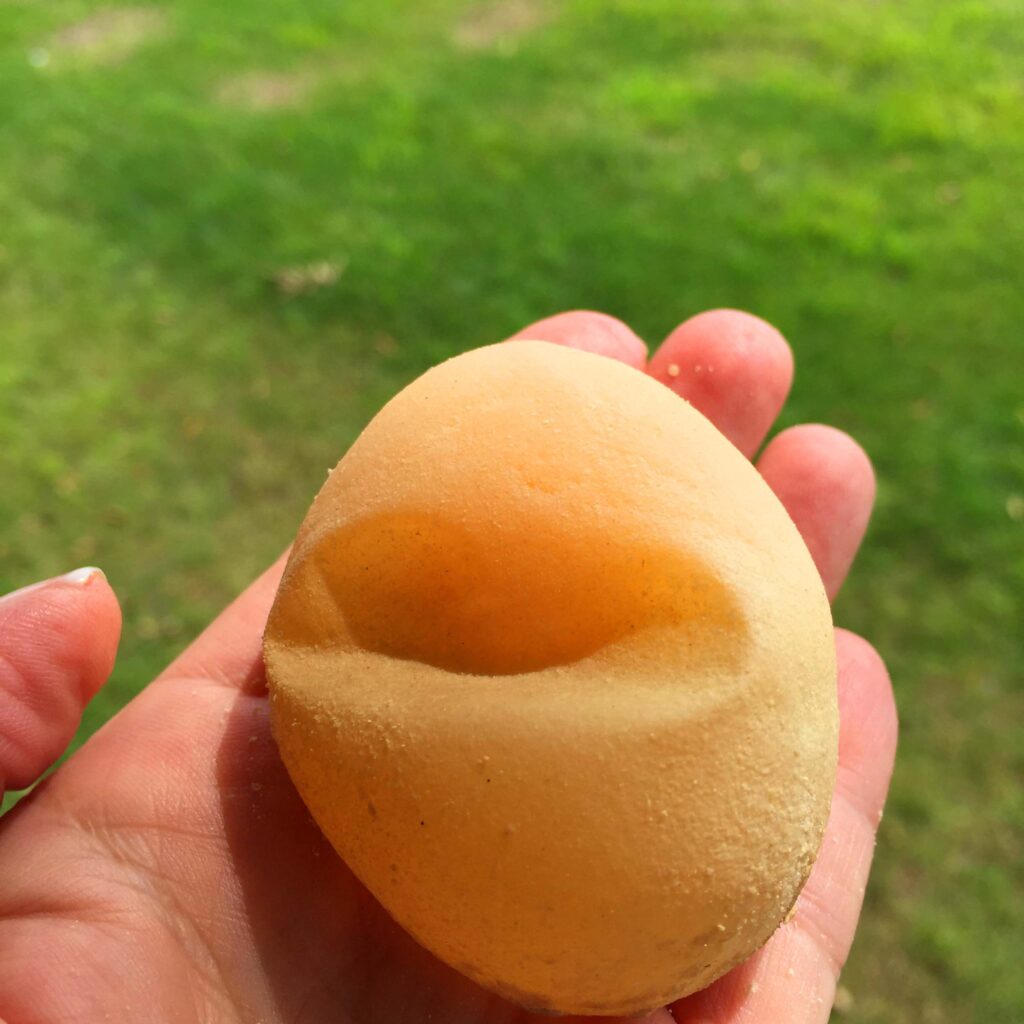 Did you know all hens (like humans) are born with all the eggs they will drop throughout their laying life-cycle? The reason a hen can lay almost daily is that the ova are in a continuous chain, in various stages of development . In general, it takes 25 hours to form a shell and lay an egg, and they are laid normally during daylight hours, so each day they are laid a bit later until its too dark, and then they skip to the next day. Here is a diagram of the 25 hour journey.
Did you know all hens (like humans) are born with all the eggs they will drop throughout their laying life-cycle? The reason a hen can lay almost daily is that the ova are in a continuous chain, in various stages of development . In general, it takes 25 hours to form a shell and lay an egg, and they are laid normally during daylight hours, so each day they are laid a bit later until its too dark, and then they skip to the next day. Here is a diagram of the 25 hour journey.
Do you know the difference in free-range, cage-free, and pastured? You may be impressed by the wrong terms. Wise animals are pastured – and that means so much more than free-range which doesn’t guarantee that animals leave their sheds since food and water are generally kept inside. It only means they have the option to range freely. When you think of chickens living the good life, roaming in a wide open clover-filled field, you are thinking of Wise Family Farm. But in many places that is not what you get.
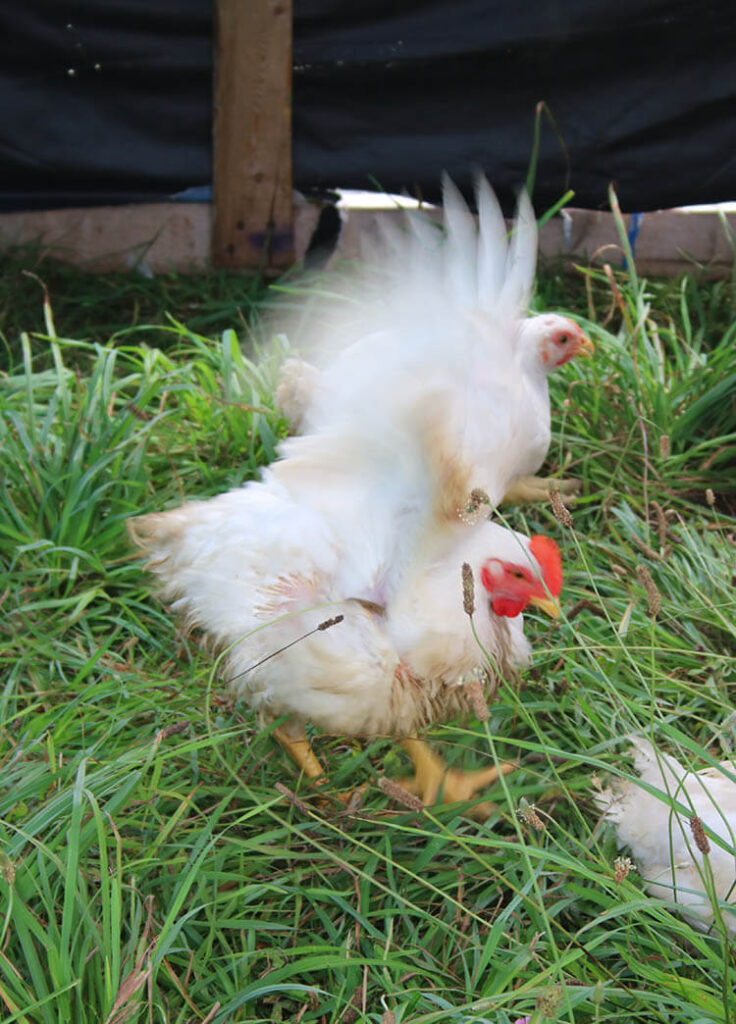 Ever wonder why fresh hard boiled eggs are impossible to peel? Remember how that egg and its shell were literally just created in 25 hours? That means the membrane (the outside on the jelly egg or that white thin layer just inside the shell on a boiled egg) and shell are very much integrated and the white (albumen) with its fresh acidic pH is attached to them both. Once the egg has been washed (before it ever gets near your kitchen), the shell becomes more permeable and the albumen loses some of its carbon dioxide, which in turn reduces the acidity of the egg white. Lower acidity egg whites means easier to peel since there is further separation between the albumen and membrane. Concurrently, as the egg ages, it will dehydrate and shrink, creating a bigger air pocket between the shell and the membrane. More separation equals easier to peel.
Ever wonder why fresh hard boiled eggs are impossible to peel? Remember how that egg and its shell were literally just created in 25 hours? That means the membrane (the outside on the jelly egg or that white thin layer just inside the shell on a boiled egg) and shell are very much integrated and the white (albumen) with its fresh acidic pH is attached to them both. Once the egg has been washed (before it ever gets near your kitchen), the shell becomes more permeable and the albumen loses some of its carbon dioxide, which in turn reduces the acidity of the egg white. Lower acidity egg whites means easier to peel since there is further separation between the albumen and membrane. Concurrently, as the egg ages, it will dehydrate and shrink, creating a bigger air pocket between the shell and the membrane. More separation equals easier to peel.
Wait – do I have to choose between easy to peel and fresh?? No you do not. Before you settle for supermarket eggs that are allowed a full 45 days from packing to use-by date, consider this. Tracy suggests putting a rack or steamer basket over boiling water and steaming rather than immersing in boiling water. 12 minutes for hard boiled – 6-9 for soft boiled with a somewhat runny yolk. You may also try taking the egg from the steamer or boiling water and immediately running it under cold water. While holding the egg under the running water, peel, starting at the rounded end where there is an air pocket, .
Get to know your farmers and once you know their passions, it’s easy to be more mindful in your buying choices. Local farmers work incredibly hard to bring you quality produce, so what’s say we show them some love??
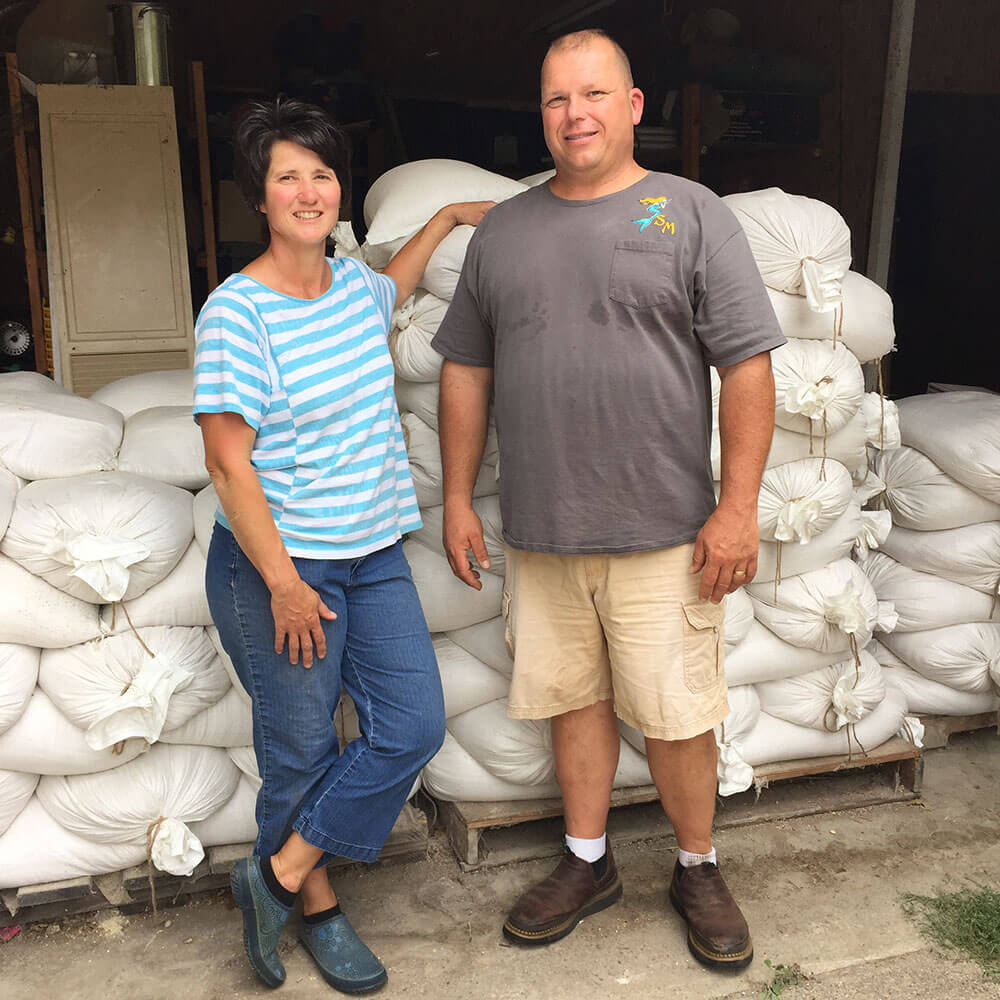
Wise Family Farm is on Facebook! Like! Like! Like!
Grand Haven Markets: til noon Wednesday and Saturday (through October) Shop! Shop! Shop!
Spring Lake Market: til two Thursday (through mid-October) Shop more!
For orders: 616-499-5662 (if you are not in range for Wise turkeys, think now about finding a source near you. It’s later than you think when it comes to planning for your holiday bird. #EatLocal #EatEthical)
I’m traveling and have split this post into two parts. Stay tuned for Eggstravaganza Part 2 featuring my Roasted Poblano Strata recipe – using Wise Family Farm eggs, of course!
© Copyright: KatyKeck.com 2016. All rights reserved.
Hey, we want to hear from you!
Don’t forget to Comment, Share & Subscribe to our blog.

, about 2-3” deep (I prefer “stick” over non-stick – that results in a nice dark brown gravy), a Roasting Rack
that raises the turkey for essential airflow, an Instant Read Thermometer
to validate estimated cooking time, a Fat Separator
to skim off fat and pour the rich stock from the bottom of the vessel, and anything written by Rick Rodgers, including The Turkey Cookbook
, Thanksgiving 101
, and The Big Book of Sides
. I can safely say everything I know about turkey and gravy I learned from Rick. He IS Mr. Turkey.
inserted in the meaty part of the thigh (but not touching the bone) reads 180° F and the breast is 165° F, about 4 hours. Whenever the drippings evaporate, baste from the stock pot and add a bit more stock to the roasting pan. Remove the foil from the breast during the last hour to let the skin brown.
or heatproof glass measuring cup. Let stand 5 minutes, then skim off and reserve the clear yellow fat that rises to the top. Measure 1/2 cup fat, adding butter, if needed, to make 1/2 cup.
